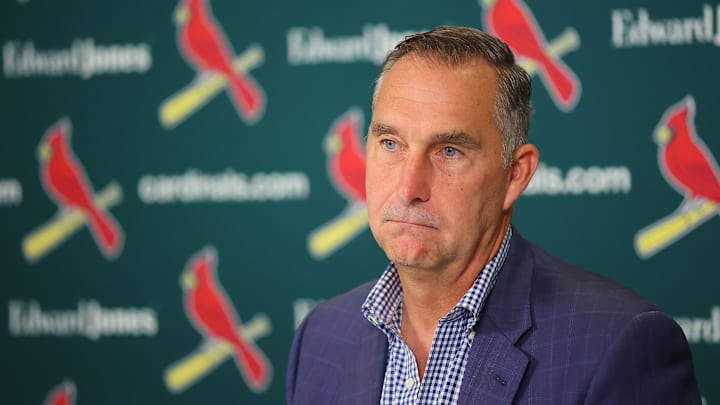The St. Louis Cardinals' recent struggle to define their identity at the trade deadline has become a recurring nightmare. John Mozeliak’s uncertainty surrounding whether they will be buyers or sellers is not merely a strategic misstep; it's a symptom of a deeper organizational weakness, signaling a troubling lack of a coherent long-term plan.
The transition from Mozeliak's reign to a new Chaim Bloom regime has only exacerbated this issue. A new GM typically brings a fresh vision, a decisive direction for the franchise's future. Instead, with this overlap, the Cardinals are still stuck in a state of limbo, unable to commit to either a full rebuild or an aggressive push for contention. This flip-flopping is detrimental on multiple fronts.
First, the argument for spending now, even if it gets them to the playoffs, is fundamentally flawed. While the Cardinals may possess a "playoff team," they demonstrably lack the firepower and depth of a true World Series contender. Injecting one or two pieces into a roster that has multiple deficiencies would be akin to patching a leaky boat with a band-aid and fails to address the underlying structural issues. Such moves often deplete the farm system, mortgaging future success for a fleeting chance at a deep playoff run that is unlikely to materialize into a championship.
Second, the Cardinals had what sounded like a plan for this season: Let Bloom see what he had to work with in the minors. He was to focus on development and methods to reestablish their pipeline and to develop a new philosophy on what type of players we needed. This was to happen at the same time that management was trying to unload salary and make room for the young guys to play. This would give Bloom a year to find the weaknesses and to give him the information and a clean slate needed to have a successful offseason.
Once Nolan Arenado exorcised his right and turned down a trade, it seemed as if there was no plan B. Other players like Gray and Contreras let the management know they didn’t want to be traded either. They could have still traded players like Helsley, but they froze. That, coupled with the Cardinals having a better record than expected, has put them in this position.
The cynics could say there is a bigger reason the Cardinals may want to scrap their plan and try to make the playoffs. It has nothing to do with baseball. It has nothing to do with making the team better. Just follow the money. It’s no secret the fans haven’t been filling up the stadium this year. A couple of playoff games would recoup some of the money the owners have lost this year. That short-sighted reasoning makes the team weaker, not stronger.
Ultimately, the inability to commit to a clear direction shows a severe deficiency in organizational planning. A successful sports franchise operates with a well-defined philosophy, whether it's a commitment to a multi-year rebuild, a sustained period of contention, or a strategic retooling. The Cardinals, however, appear to be drifting, reacting to short-term results rather than executing a calculated strategy. Without a clear path forward, the St. Louis Cardinals risk becoming a team perpetually stuck in mediocrity, always good enough to be interesting, but never quite good enough to be truly great.
